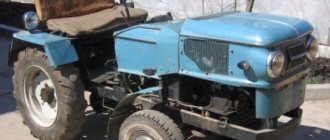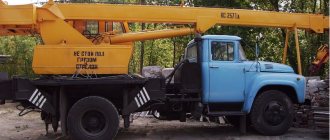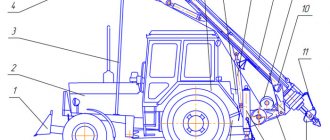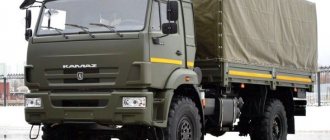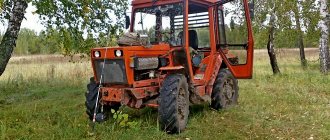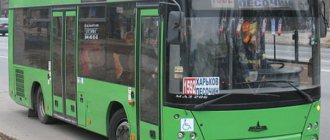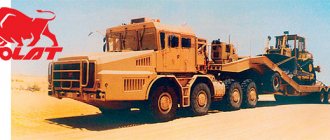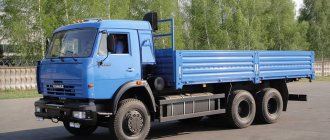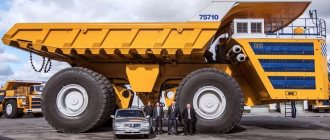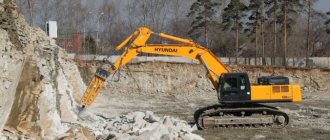These minibuses open up a new niche for the Belarusian automotive industry and, accordingly, new prospects. In the entire history of the plant, this is the most unexpected new product, for which it did not spend money on developing equipment for the production of bodies and units. The MAZ minibus is produced under the designations MAZ-181 010 and MAZ-182 010. The models differ in roof height, increased wheelbase by 300 mm and an increased number of seats in the cabin. The price for the new MAZ, as promised at the factory, will be competitive. These MAZ cars currently only have plastic bumpers and emblems. Everything else is identical to the KingLong brand minibus, which is a clone of the ancient Toyota HiAce.
Was the bus Chinese?
Chairman of the city executive committee of the city of Brest A. Rogachuk noted that MAZ’s own products are only adapted versions of JAC Sunray from the Middle Kingdom. Information for notorious skeptics of “everything Chinese.” According to some experts, the JAC Sunray's performance, reliability and durability are comparable to the 2nd generation Mercedes-Benz.
Some even claim that the Chinese have openly copied the Mercedes minibus - they do it very well. However, JAC Motors assures that the Italian design bureau was responsible for the exterior, and experts from Japan were involved in the development of the interior. It is possible that Belarusian products will reach the Russian market.
JAC Sunray
The fact is that the OTTS form and certification standards apply to the entire Customs Union, and Russia and Belarus are included in it. On the other hand, in July, requirements for the localization of vehicles exported within the union were tightened. To import cars duty-free, the percentage of localized parts must be at least 50%. “Chinese-Belarusian Mazel” is planned to be collected using a large-knot method, which excludes such “assimilation”.
Let us remind you that the Minsk Automobile Plant has already made attempts to produce a MAZ minibus. During the period from 2011 to 2013. small-scale assembly of King Long vans and copies of Toyota Hiace H100 was carried out. The products of the MAZ automobile plant are represented by heavy equipment: buses, dump trucks. Therefore, the release of a van or minibus will be an interesting experiment for the Belarusian automaker.
Cargoautoinfo. Freight transport in detail.
The bus branch is the most developing division of MAZ, initially designed to produce only 500 cars per year. And MAZ now annually produces more than 1,500 units of equipment. Bus production has almost replaced the production of all superstructures, trailers and special equipment at Mogilevtransmash.
Now, having occupied all possible areas on the main territory in Minsk, he intends to grab a piece of territory in Mogilev. To the question: “Why?” – the answer was received in mid-December.
“MAZEL” - how much there is in this sound
In my memory, this was the strangest premiere of the Minsk Automobile Plant. Two snow-white minibuses with MAZ emblems were clearly in dissonance with their Chinese appearance with the rest of the second generation buses. Moreover, the second generation, against their background, looked almost like the fourth.
And the names in the accompanying booklet seemed strange - MAZ-181010 and MAZ-182010. Why first generation? What does eight mean? Why a six-digit index if all MAZ buses have a three-digit designation? But, be that as it may, since the factory workers call the buses that way, then we will stick to these names.
The larger one is MAZ-181...
...and the smaller one is “182nd”
The inside of the cars is quite neat and at the same time unique.
The rather forgotten layout with the engine behind the front axle makes us remember the good old RAF and UAZ “loaf”. In terms of fit, of course, and not in terms of comfort. The latter is naturally better here. Electric windows, quite comfortable steering wheel. True, the sliders of the ventilation unit look archaic, but the air is distributed as it should and the interior warms up normally. With a three-seat layout in front, the gearbox lever mounted on the tide of the engine compartment significantly constrains the middle passenger. But when there is a comfortable box in the middle instead of a seat, it becomes much more convenient to manipulate the lever.
The reclining seats in the MAZ-181 are not comfortable...
...and in the MAZ-182 there are no “folders”, but even without them it’s cramped.
The interior of both MAZs is cramped. The MAZ-181 has a high roof with air ducts on one side, and folding “stools” on the other, which, both folded and unfolded, interfere with the process of boarding and disembarking. There are no straps in the MAZ-182, but the low ceiling “presses” on the head. In addition, there was an impression that there was less legroom.
Upon closer inspection, it turned out that the feeling was correct - the lengths of the minibuses are different. MAZ-181 is 300 mm larger than MAZ-182. The entire increase occurred in the wheelbase, without touching the front and rear overhangs. As a result, the MAZ-181 had a different driveshaft, consisting of two parts and a suspension device, the routing of the brake pipes was changed and an additional insert appeared in the exhaust pipe. By the way, the exhaust system itself consists of several parts connected to each other by bolts. I have a hard time imagining how to promote the latter after our “chemical” winter.
The front panel is simple, but doesn’t smell like the 80s.
The MAZ-182 has only two seats ahead.
In general, if we were to add the interior layout of the MAZ-182 to the dimensions of the MAZ-181, we would get a good minibus for transporting employees. Probably, those at the plant are also inclined to this idea, because two days after my first acquaintance with this duo, at the official presentation of the two MAZelles, it was the MAZ-181 that sported an updated bumper and a false radiator grille.
I'm walking and wandering
Still, it seems that the plant management was in a hurry with the display of these cars. It would probably be worthwhile to first finalize the design and interior, and only then present the new product to the general public. After all, whoever ultimately was the prototype of the Belarusian “micriks” - BAW 15 Seats Minibus, Kingstar Venus 15 Seats Minibus, King Long minibus or another car with the BJ6520XBD1 index - still its prototype was the Toyota Hiace H100 from the distant 80s. Still, it would be worth finding a newer design with a half-hood layout to copy.
It’s doubly annoying that the management understands perfectly well what “half a meter of life” is, and even refers to them when announcing a promising 60-ton bonneted truck. Why the choice was made for a model that, even in the latest generation, is not a very frequent guest on our roads, remains a mystery.
The prospects for MAZelle are quite vague at this stage. The plant announces annual production figures of 500 units, and production itself is planned to be launched at the mentioned Mogilevtransmash branch. If you think about it, this is a serious request. After all, it’s not enough to assemble a car; you also need to sell it. But MAZ minibuses may have problems with this.
There is no point in seriously counting on the fact that in this form they will be able to compete with route GAZelles. Especially in light of the fact that even in Belarus itself, carriers are trying to get rid of GAZ products and buy a European minibus - fortunately, there are enough manufacturers of “vanbuses” both there and in Russia. So the MAZ-181 will be able to enter this market only with the help of the voluntary-compulsory policy of the state, since it is categorically not suitable for regular passenger transportation.
The rear door of Belarusian minibuses is single-leaf.
But replacing Sobol in government agencies is easy. The combination of a high roof and a long wheelbase will allow you to create minibuses with a VIP interior. By abandoning the folding seat belts, it will be possible to install comfortable seats and get a corporate car for 10 passengers. They fenced off the rear part - and here you have a “combi” for emergency services. You can even create a linear vehicle for an ambulance brigade if desired. All that remains is to establish decent service and... you see, MAZik, adapted to our realities, will become no less popular than the first generation of large buses, which trace their origins to Neoplan.
An element of the torsion bar front suspension is visible above the pipe.
Solid defense ahead. Just what?
Specifications
Many people are interested in the technical content of the MAZ van and minibus. Until recently, this information remained unknown; the Belarusian automaker categorically did not want to disclose it. Today we have detailed data on the technical characteristics of new products.
Both vehicles will have an independent suspension on springs in front, complemented by shock absorbers and a stabilizer bar. The rear suspension is leaf spring, dependent. There are also shock absorbers here. For convenience, the steering wheel will be equipped with a hydraulic booster and a 2-circuit braking system will be made. ABS, EBD declared. The front brakes will be disc and the rear will be drum.
Both vehicles will get a JAC turbodiesel engine, which is quite expected. This is an in-line “four” with a front longitudinal arrangement, a cylinder capacity of 2746 cubic meters. cm., with a capacity of 149 horsepower. Certified for Euro-5, there is an SCR system. As for the gearbox, expect a 6-speed JAC.
Scope of application of the machine
The main purpose of the MA3-4Z70 “3ubrenok” model is to transport various cargo, including with a trailer, on intracity, suburban and intraregional routes. Although the presence of a mobile sleeping bag in the cabin also implies some “long range”. But not interregional, of course: a low-loader is not suitable for this. Its main element is the delivery of goods to various retail chains.
The low-frame body design helps in transporting large and high loads, facilitates and increases the speed of loading and unloading the body. The main design of the vehicle is a flatbed truck, with the installation of an awning. However, the design of the MA3-4Z70 also allows the installation of a variety of special equipment on the chassis of this machine. Often “Zubryat” is equipped with cranes, lifting towers, tow trucks, compact concrete mixers and tank trucks, dump trucks, vans or refrigerators. Good maneuverability in dense traffic and medium dimensions allow the vehicle to be used in urban public utilities and in production.
General dimensions of new cars
Let's start with the MAZ-281 minibus, which has an M2 category and a 4 x 2 wheel formula. The rear-wheel drive car has an all-metal body and as many as 5 doors. The doors will open at the rear (hinged), two more in front, in the cabin. Passengers will enter the cabin through a sliding door on the starboard side. The new MAZ minibus has the following dimensions:
- The length of the vehicle is six meters.
- Width – 2.1 m.
- Height – 2.8 m.
- The wheelbase turned out to be decent - 3.57 m.
Minsk Plant announces the certification of two versions of the bus. Its passenger version will be designed for 16 people (17 with driver). The permissible weight is 4050 kilograms. The cargo-passenger version with a capacity of nine people (10 with driver) has a permissible weight of 3.5 tons.
Like the new MAZ minibus, the van of the Belarusian manufacturer will have overall dimensions of 6 x 2.1 x 2.8 meters. The permissible weight is 4050 kg.
Equipment of the minibus-van MAZ-233150
The interior of the MAZ-233150 has air conditioning, a stylish folding table and a side sliding door with an automatically retractable step. The seats have reclining backs and are equipped with seat belts and lateral support. The floor of the cargo compartment is lined with corrugated aluminum, and a metal protective mesh is installed on the windows. Lighting provided.
Salon MAZ-233150
Cargo compartment MAZ-233150
There is also an office version of the MAZ-233150, in which the number of passenger seats is increased to 8, and the cargo compartment is accessible from the cabin - there is a refrigerator, a wardrobe and a locker with a sofa where you can sit while parked. This arrangement is suitable, for example, for organizing mobile medical services for the population. The mobile office interior is creatively decorated with LED strip, has two 220V and many USB sockets, as well as an HD monitor.
Cabin and controls of MAZ-4370
MA3-4Z70 “3ubryonok” is equipped with a three-seater (without a sleeping bag) or a two-seater (with a folding mobile sleeping bag) cabin. As noted earlier, the Zubryonok’s cabin is very, very spacious for a medium-duty vehicle, since it was borrowed from the “adult” MAZ.
The berth is a mobile-folding one, which under normal conditions is simply a shelf located in the rear of the cabin, behind the seats. Thanks to the impressive internal volume of the cabin, as well as the flat floor, three adults of any size can easily fit in it without creating problems for each other.
The driver's seat, although it cannot be called comfortable and modern, is still air-sprung and equipped with a set of adjustments. The controls are generally the same as on the “adult” MAZ.
Numerous complaints are caused by poor build quality, fit of interior trim parts, as well as the materials themselves from which the cabin is made. Cheap and unpretentious plastic and leatherette, although they evoke warm nostalgia for the Soviet Union, in the 21st century they no longer look out of place on a car. There are simply no words about the finger-thick cracks often found on Zubryat at the joints of the rubber panels.
Transmission
Existing modifications of MA3-4Z70 are equipped with manual gearboxes SAAZ-3206 or ZF S5-42. The manufacturers of these units are the Saransk Aggregate Plant and the German company ZF. All gearbox options are five-speed. The single-plate friction mechanism of the dry clutch transmits torque from the engine shaft to the transmission. The diameter of the disc is 34 cm or 36 cm. The rear axle is driven. It is equipped with a bevel gearbox and a cross-axle differential with locking.
Gearbox ZF S5-42
Engines MA3-4Z70 “3ubrenok”
The most widely used on the Zubryaty was, of course, not the German Deutz, but the cheaper diesel engine of the Minsk Motor Plant MMZ D-245, upgraded by Belarusian specialists first to Euro-2 standards, and then to the Euro-Z environmental level " This is a well-known in the CIS, time-tested “tractor” four-stroke four-cylinder diesel power unit. It is good for its reliability, unpretentiousness, endurance and high maintainability. The MA3-4Z70 engine is equipped with a turbocharger, its cylinders are arranged vertically in a row.
Technical parameters of the MMZ D-245.30 E3 diesel engine:
- Working volume – 4.75 l;
- Nominal rotation speed – 1500 rpm;
- Compression ratio – 17;
- Power – 95 kW or 157 horsepower;
- Maximum gross torque – 580 N.m;
- Diesel fuel consumption is 205 g/kWh, or 17-18 liters per 100 km;
- Dry weight of the engine is 450 kg.
Engine MMZ D-245.30
The Deutz BF4M 1013FC engine is equipped with a number of additional options that ensure its more uniform and quiet operation, with less noise and vibration load than the D-245. These are, in particular, an improved cooling system, a more modern turbocharger and an electronic speed controller. In terms of technical characteristics, Deutz is similar to MMZ. Technical parameters of the Deutz BF4M 1013FC diesel engine:
- Working volume – 4.8 l;
- Nominal rotation speed – 1500 rpm;
- Compression ratio – 17;
- Power – 170 horsepower;
- Maximum gross torque – 580 N.m;
- Diesel fuel consumption is 205-209 g/kWh;
- Dry engine weight – 560 kg.
Modifications
There are four main modifications of the MA3-4Z70 “3ubrenok”. They differ in the engines and gearboxes that are installed on them.
- MA3-4Z7040 – with MMZ D-245.9-540 engine and ZIL-695D (SAAZ) gearbox;
- MAZ-43704 – with MMZ D-245.30 engine (Euro-2) and SAAZ-3206.70 gearbox;
- MAZ-437043 – with MMZ D-245.30 engine (Euro-Z) and SAAZ-3206 gearbox;
- MAZ-437030 – with a Deutz BF4M 1013FC engine (Euro-Z) and a ZF S5-42 gearbox.
In addition, the produced modifications of the Zubrenok may differ in the length of the wheelbase (3 m; 3.7 m; 4.2 m); the presence or absence of a rear hitch for towing a trailer.
Reviews from drivers and owners about “Zubryat”
The demand for medium-tonnage MA3-4Z70 “3ubryonok” trucks was great in the 2000s, and at one time they were very popular in the vastness of the former USSR. Therefore, our people studied this model well and described it in great detail in their reviews. According to these reviews, the car has four main advantages and trump cards. This is a cheap price (in comparison with new “classmates” made in Europe); simplicity, maintainability and relative low cost of maintenance and repair; large load capacity for a vehicle of this class; and low diesel fuel consumption (which does not differ from that declared by the manufacturer and is actually at the level of 17-18 liters per 100 km. Also, as a clear advantage of this model, the driving performance of the suspension is noted: the car rides smoothly, and even at maximum load there is no breakdown .
There are also plenty of shortcomings and outright shortcomings. Drivers and owners have complaints about the cabin heating system. In real Russian frosts, there is still enough heat to heat the windshield, but the side windows freeze, and no heating modes can save them. In winter, while driving, drafts begin to freely “walk” through the cabin, and drivers have to insulate it in every possible way and seal the cracks.
The open shelf above the head, intended for documents, does not cope with its functions - papers periodically fall down as we move. A driver of average height has to move the seat almost to the rear wall of the cabin in order to comfortably sit behind the wheel. On a new car, the back of the seat does not yet touch the rear wall of the cabin, but over time this structure becomes loose, and the back of the seat begins to rub against the wall of the cabin and tear the upholstery. You can move the seat closer to the steering wheel, but then the steering column ends up between your legs - uncomfortable.
The pedal assembly causes complaints. Namely, the high location of the clutch pedal. In addition, in order to push it through, it is necessary to make a considerable effort. The cabin lacks rigidity. If you fold it back, then the doors can no longer be opened or closed. Therefore, if you need to raise the cabin, you must remember to take everything you need from it. It is also important that you can open the cabin doors with almost any key, even a regular door lock. Drivers get out of the situation by hammering a wooden wedge into one of the lock cylinders, and blocking the other door automatically when the alarm is turned on, while the door lock cylinder does not participate in either the process of opening or closing the door.
The designers of the car are given an unkind word for the fact that the plastic fender liners are mounted not in the wheel wells of the cab, as on most trucks, but on the frame of the car. If usually on trucks, when the cab is tilted, the fender liners rise up along with it and access to the engine is free, then on the “3bryonka” they remain in place. And they make access to engine systems very difficult.
The D-245 tractor engine, although modernized for installation on cars, still remains too noisy, and the increased vibration load from its operation is annoying even after you get used to it. To replace the oil filter, you have to remove the air charge turbine. Otherwise, changing the filter will not work. This is the design cost when a turbocharger was installed on a tractor engine with a block layout not adapted for turbocharging. It (the turbocharger) interferes with manipulations with the coarse fuel filter. The filter bowl is mounted on four bolts behind the turbine, and in order to unscrew and tighten them, you have to be truly flexible.
The car's paint job leaves much to be desired. The paint on the sides and on the side underride bars is peeling off in patches; after the first years of operation, the cabin becomes “freckled” from small pockets of rust. In winter, ice accumulates in the recesses on the flat tent roof, and with sharp braking from below, you can get a sizeable block of ice on the roof of the cabin. An important point: MA3-4Z70 “3ubrenok” really doesn’t like overloads: the suspension breaks.
